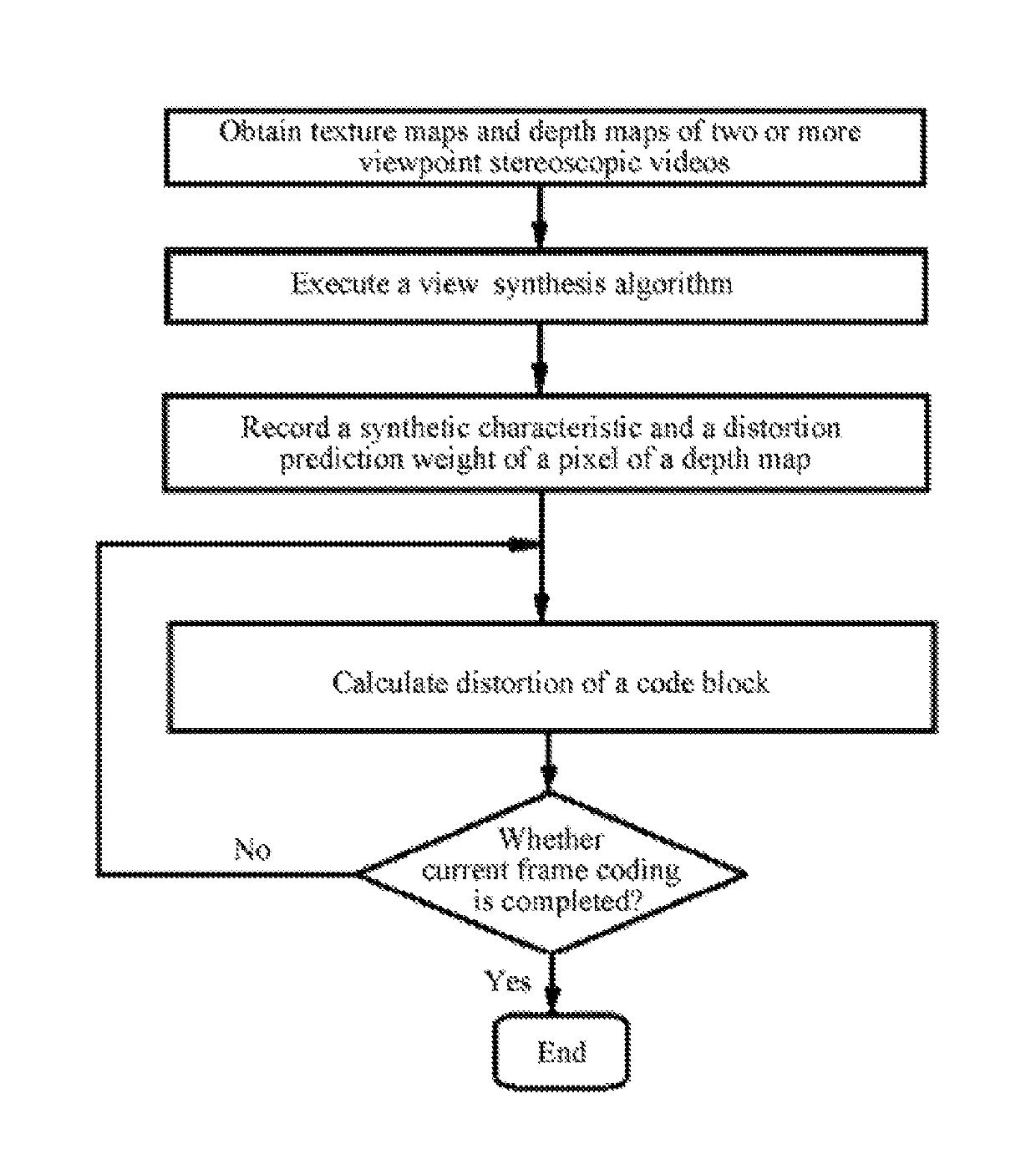Method for predicting depth map coding distortion of two-dimensional free viewpoint video
a two-dimensional free viewpoint and depth map coding technology, applied in the field of video coding, can solve the problems of large amount of calculation, inability to ensure the overall quality of the synthesized view, and large calculation complexity, and achieve the effect of improving the accuracy of the method for predicting depth sequence coding distortion and reducing the complexity of the depth map coding of free viewpoint videos
- Summary
- Abstract
- Description
- Claims
- Application Information
AI Technical Summary
Benefits of technology
Problems solved by technology
Method used
Image
Examples
Embodiment Construction
[0035]The present application is further described below with reference to the accompanying drawings and some embodiments.
[0036]The present application provides a method for predicting depth map coding distortion of a two-dimensional free viewpoint video. As shown in FIGURE, the method mainly includes the following steps.
[0037]First, texture maps and depth maps of two or more viewpoint stereoscopic videos are obtained.
[0038]Then, a view synthesis algorithm is executed.
[0039]Meanwhile, a synthetic characteristic and a distortion prediction weight of a current depth map pixel are recorded.
[0040]Next, distortion of a code block is calculated.
[0041]Finally, it is determined whether current frame coding is completed; if the current frame coding is completed, the process is ended, and if the current frame coding is not completed, the foregoing step of calculating the distortion of the code block is returned to until the current frame coding is completed.
[0042]In this embodiment of present...
PUM
 Login to View More
Login to View More Abstract
Description
Claims
Application Information
 Login to View More
Login to View More - R&D
- Intellectual Property
- Life Sciences
- Materials
- Tech Scout
- Unparalleled Data Quality
- Higher Quality Content
- 60% Fewer Hallucinations
Browse by: Latest US Patents, China's latest patents, Technical Efficacy Thesaurus, Application Domain, Technology Topic, Popular Technical Reports.
© 2025 PatSnap. All rights reserved.Legal|Privacy policy|Modern Slavery Act Transparency Statement|Sitemap|About US| Contact US: help@patsnap.com

